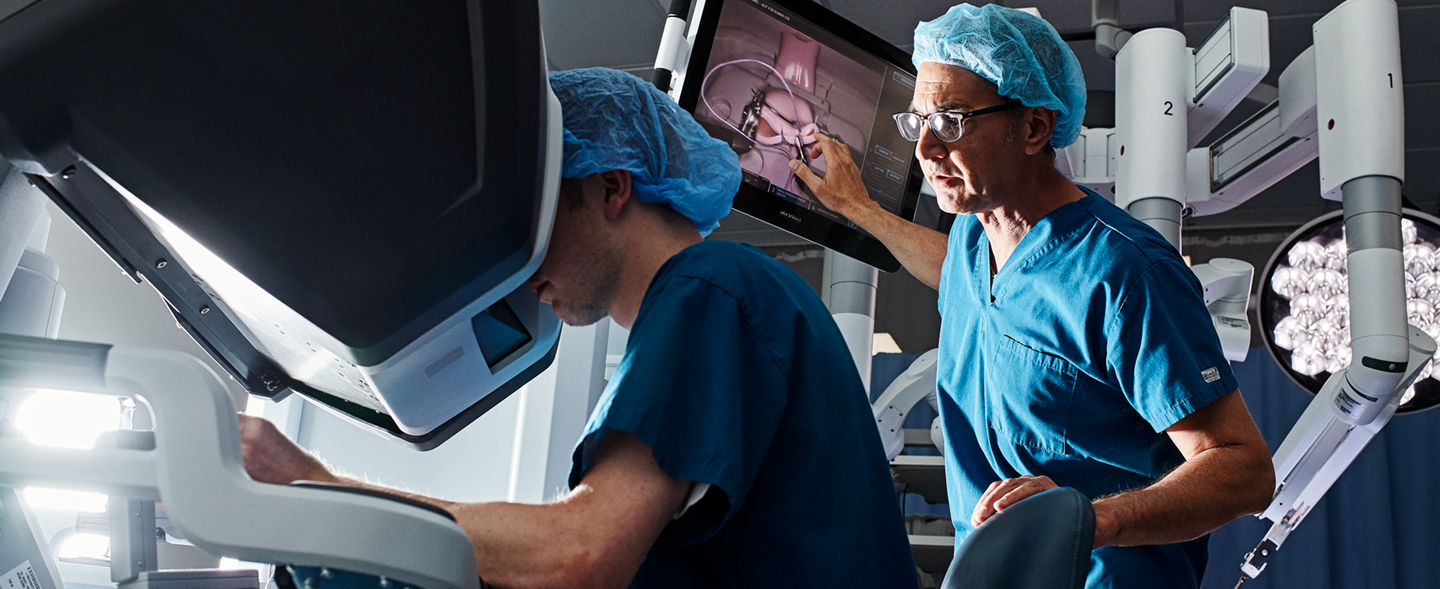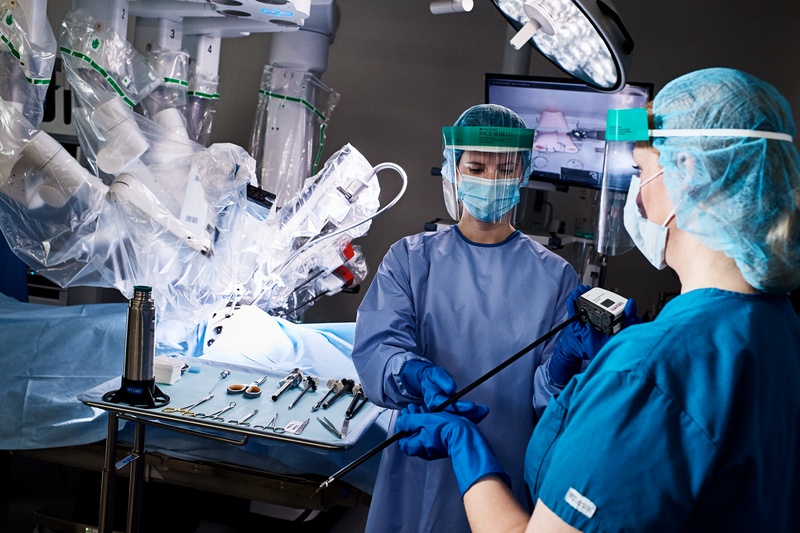

By Dr. Gillian Duncan
In a setting as complex as surgery, helping medical professionals train for both the basics of robotic-assisted procedures as well as the intricacies of more challenging cases requires intense focus to keep training engaging and relevant. After years of shaping Intuitive’s learning programs, I can say it helps to love feedback and have a willingness to change.
As our da Vinci systems have evolved over 20 years and more than 12 million cumulative procedures, the way we help surgeons and care teams use our technologies has transformed significantly. I’m proud of how we’ve balanced virtual learning, in-person observation, and hands-on teaching. But I’m also ready to try new ideas if we find signs that we’re falling short.
The latest feedback suggests we’re still meeting the challenge, with one of our key training pathways receiving certification from the esteemed minimally invasive surgical body IRCAD after its thorough review this year.
In-depth training that helps practitioners learn quickly and effectively can help drive adoption for our systems globally. We keep pushing the envelope on our training approaches to support the 66,000+ surgeons who use our products globally today as well as the thousands of future surgeons and care team personnel.
We’re there to support a surgeon’s entire journey with us: Our learning innovation offers relevance whether they’re just logging onto a da Vinci system for the first time or if they’re approaching 500 cases and seeking new skills.
I have found that as educators, we must anticipate surgeon preferences as well as listen closely to what they tell us, individually and through key surgical societies and organizations. We closely track data to give Intuitive a real-time report card on our training efforts; it guides our innovation and supports ongoing excellence.
Individual skill proficiency can only go so far in training. We’ve curated a combination of simulation, virtual learning, in-person observation, and hands-on training with high-quality tissue models; it’s an effective mix that can help surgeons get up to speed quickly on specific tasks such as how to position instruments or suture tissue. But if we test surgeons and care teams separately on each of those areas and they pass, are they ready to use the technology tomorrow?
The answer is our learners need a broader knowledge of how our systems work. They need to be able to stitch together individual skills to demonstrate competence and confidence in approaching surgery, whether it be for the surgeon on our da Vinci console, or the patient-side assist or care team members supporting a procedure. Quality learning remains essential to complement hospitals’ own credentialing system, as our customers determine when surgeons are ready to be in the OR. Our learning scope also goes beyond the OR to the sterile processors of our equipment, where efficiencies can boost hospital performance and help a robotics practice grow, along with maintaining patient safety.
Medical device training for many years leaned on a “see-one, do-one, teach-one” rubric to spread knowledge; today it’s more about a multi-faceted engagement that serves multiple learning styles and pace preferences. We strive to accommodate all learners and let them build their experiences with proctoring and support.

Surgery is intricate, and benefits most from training programs that are focused on sequential, progressive skill building so that’s where we’ve targeted our efforts. By creating immersive and engaging offerings, we support surgeons and care teams access their stepwise training where they want, when they want. That kind of flexibility is key for busy healthcare professionals globally.
Each of our training pathways integrates virtual and in-person engagements to create the most impactful learning experience, with nearly 7,400+ training sessions performed in 2022. We combine intensive hands-on courses with online videos, virtual training programs, our SimNow simulation exercises, and real-time peer mentoring and proctoring by more than 1,000 third-party surgeons.
The pandemic in 2020 forced us to shift quickly to more virtual offerings—we created dozens of new online courses and expanded Intuitive Learning, our online education platform, to include even more technical and clinical videos. When Covid-19 hit, surgeons and care teams couldn’t travel long distances for long stretches—it was part of the full-blown staffing and operational crisis that continues to reverberate through ORs today. In response, we moved this essential in-person training much closer to those customers, opening a variety of smaller centers within easy driving distance.
Much of the medtech world jumped into making virtual reality tools when the technology first debuted years ago; we also investigated its application but found through several pilot programs that it was too nascent to offer immediate training value.
The technology has advanced significantly since then. Today, we’re exploring broad aspects of augmented and virtual reality to bring smarter training tools to our surgeons and care teams. Effective integration of VR and AR will enable medical professionals to familiarize themselves with our systems independently and receive objective feedback. This is just the first of many applications we have in store. It’s an exciting time.
There’s a lot of talk around the potential of artificial intelligence and machine learning in surgery. We sift through the talk and rely on data—and we have the advantage of working with data from more than 12 million procedures, and robotic technology experience of more than 26 years to help turn that information into actionable insights for learning. It’s helping us develop future AI training applications 1 that may help improve consistency among surgeons and potentially even help surgeons lower complications by identifying crucial moments of a procedure where the right combinations of instruments and approach appears to yield fewer issues.
Our teams are building an algorithm through machine learning by annotating thousands of surgical videos; the aim of which is a future product 1 that can recognize which step a surgeon is on during a procedure, compare their technique to other surgeons, and make recommendations on where they may want to strengthen their learning.
In theory, this AI/ML project 1 could, for example, one day alert surgeons that their tissue sealing may leak based on comparisons it makes to thousands of other seals in its database. The result could be fewer leaks that require repair.
Our training journey here at Intuitive continues to focus on innovation, our careful listening to surgeons and care teams, and our drive to keep finding new ways to help professionals gain proficiency with the robotic-assisted ecosystem. As eventful as the pandemic-driven few years have been in my world, I can’t wait to see where the new ideas our approach to learning tomorrow.
Dr. Gillian Duncan is Senior Vice President of Professional Education and Program Services at Intuitive.